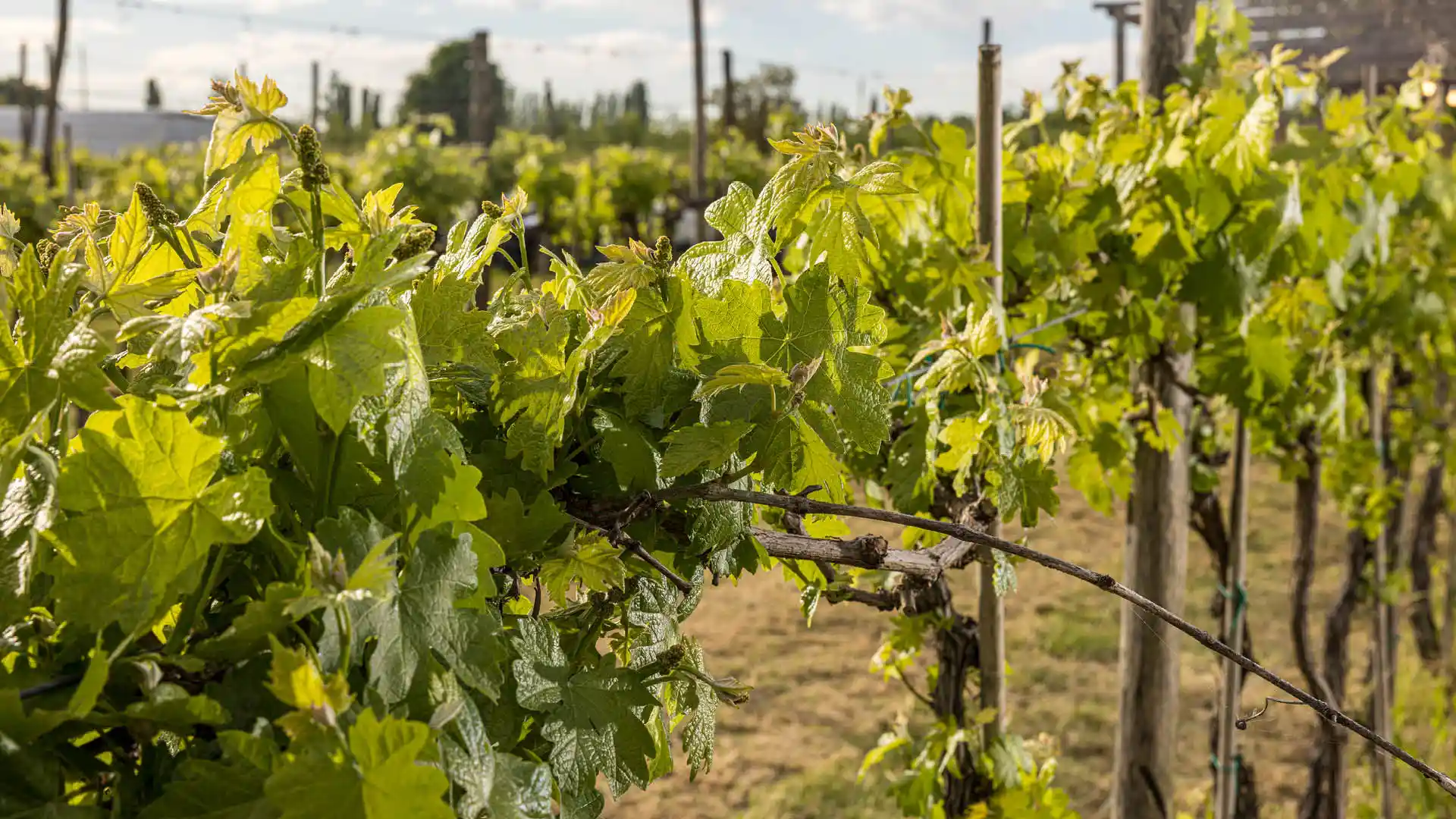Contemporary Lambrusco

It is the most in step with the times wine there can be and, at the same time, with characteristics reminiscent of a rural and natural world now hard to find. We are talking about Lambrusco, the ‘red with bubbles’ par excellence, the sparkling wine of great quality and satisfaction at decidedly friendly prices. The Romans called it labrusca, from the Latin ‘labrum’ (edge, margin) and ‘ruscum’ (wild), due to its spontaneous growth in the perimeters of fields, thus labelling this vine as a wild plant. A vine and a wine even cited by Virgil in his fifth bucolic, by Cato in De agri cultura and by Pliny the Elder in the Naturalis Historia. And then there is Andrea Bacci, Pope Sixtus V's physician and renowned botanist of the time, who wrote in 1567 that ‘on the hills opposite the city of Modena, lambrusca, red grapes are cultivated, which give spicy, fragrant wines, sparkling with golden bubbles, when poured into glasses’. Was it the 16th century, a century before Champagne saw the light of day, and was there already a ‘sparkling wine’ in Italy that could rightfully claim to be the ancestor of the noble French bubbles? Who knows.
His homeland is Emilia Romagna, of which he expresses many traits of his soul, versatile and sincere, convivial and cheerful, with that sense of light-heartedness and zest for life that a glass of Lambrusco always conveys.
Varieties and types
There are three main varieties of Lambrusco grapes: Lambrusco Salamino, Lambrusco di Sorbara and Lambrusco Grasparossa. These are flanked by many others that are considered minor, such as Lambrusco a foglia frastagliata, Lambrusco Barghi, Maestri, Marani, Montericco, Oliva, Viadanese and Ruberti (also called Grappello Ruberti). There are four types of Lambrusco Doc wine produced in Emilia Romagna: Lambrusco Rosso Salamino di Santa Croce, dry or amabile; Lambrusco di Sorbara, which can be red or rosé, dry or amabile; Lambrusco Reggiano, rosé and sweet or red and dry; and Lambrusco Grasparossa di Castelvetro, dry or amabile. Lambrusco Salamino, named after the grape of the same name with its elongated bunches shaped like small salamis, has a dark colour, an intense purple foam and a medium body. Red Lambrusco di Sorbara, on the other hand, is perhaps the most prized and is produced in the province of Modena: it is typically a light wine with aromas of strawberries, raspberries and cherries. Lambrusco Reggiano, with its lively and evanescent foam, has a pleasant aroma that varies from fruity to floral, with a fresh and fragrant taste. Lambrusco Grasparossa di Castelvetro, finally, is strongly aromatic, with a cherry-coloured foam and broader aromas than the other three types of Lambrusco. It should be noted that there is also a small production of Lambrusco Doc in Lombardy: this is Lambrusco Mantovano, typically light and with a fruity aroma.
Lambrusco is usually produced with the Charmat Method, i.e. with re-fermentation in autoclaves, but in recent years many producers have also started producing Lambrusco with the classic method of re-fermentation in bottles, which generally yields more elegant wines.

A bit of history
From recent archaeological studies, it seems that the presence of Lambrusco on Italian soil dates back as far as the Bronze Age. Recent finds of terracotta amphorae have revealed how this ancient variety was used to produce a sparkling wine much loved by the Romans, as well as the Etruscans and Celts of Ligurian derivation. Later, a very important contribution to the start and stability of Lambrusco cultivation in Emilia and Lombardy was made by the Lombards. In the 1970s, Lambrusco experienced a boom in the United States under the motto of ‘Red Cola’, which did not do much for the qualitative reputation of this wine: today, however, its quality is undisputed, so much so that some call it "Red Champagne".

What is it like?
Lambrusco is an ancient yet extremely modern wine. It is young, not too alcoholic, ready to drink, endowed with personality but not demanding, and of very high quality: Lambrusco's well-established successes in international tastings prove this, affirming the skill, commitment, competence and passion of the winemakers who work for the success of this wine.
Lambrusco can be dry, amabile or sweet, depending on how much residual sugar is left before fermentation stops. An amabile Lambrusco is therefore sweeter, more drinkable and lively than a dry product. In general, it has a particularly bright and sparkling ruby colour, its froth is particularly pink and its aroma is decidedly fine, fresh and fruity, with hints of violets. The flavour is harmonious and slightly acidulous, delicate, with low alcohol content.
It can be served chilled as an aperitif and combined with meat, hors d'oeuvres and cold cuts.
Lambrusco di Sorbara is the lightest (it has a ruby red colour) and the one with the unmistakable scent of violets, and is best with cured meats and gnocco fritto. Lambrusco Salamino di Santa Croce, on the other hand, with its deep red colour, purple-coloured foam and flavour reminiscent of ripe fruit, is best with pasta dishes with meat sauce and roast white meats or pork. Lambrusco Grasparossa, with its deep colour and violet hues, pronounced grape fragrance and fruity flavour with a bitter aftertaste, goes well with baked pasta, roast beef and characterful cheeses, but in its amabile version it is an unexpected aperitif and also goes well with dry pastries. Finally, there is Lambrusco Reggiano that goes well with sliced meats, vegetable pies (such as erbazzone) and boiled meats.







